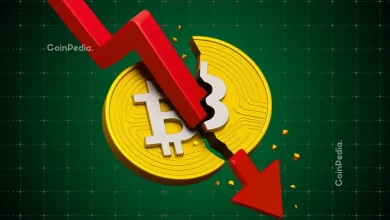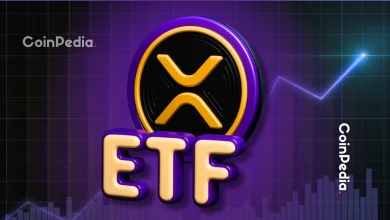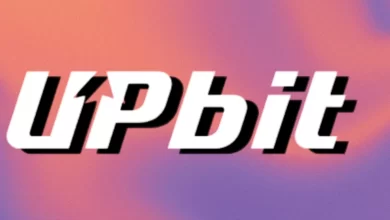
A massive $50M OTC crypto scam exposed on Telegram targeted top investors with fake discounted token deals, including SUI, SEI, and Aptos.
Despite public warnings from project insiders, hype and trust blinded victims; “Source 1,” tied to Binance, is now under fire for running the Ponzi.
A multi-million-dollar OTC crypto scam on Telegram was recently exposed by Altcoin Alpha on X. The scheme involved popular tokens like SUI, NEAR, Axelar, SEI, and many others, with over $50 million reportedly stolen.
The scam went unnoticed for months and targeted big names in the crypto space, including venture capitalists, key opinion leaders (KOLs), and major crypto whales.
Gaining Trust
It all started with what looked like Tier-1 OTC deals shared in Telegram groups by VC circles and private investors. The deals promised tokens of high-profile projects like Graph, Aptos, SEI, and SWELL at discounts of up to 50% with a 4 to 5-month vesting period. The initial deals were executed perfectly to build trust. Investors started investing larger amounts and were convinced by its smooth process and growing hype.
Furthermore, Telegram groups witnessed a surge in OTC deals involving high-profile tokens, while still offering deep discounts with the same vesting terms.
Ignored Warnings
But by 2025, there were signs of trouble. Eman Abio from the SUI team warned on X, saying clearly: “There is NO deal!” Lucian Mincu of MultiversX also issued similar alerts. But despite these public warnings, most investors didn’t listen. The money kept flowing in, even as the cracks widened.
The Collapse (June 2025)
The scam finally fell apart on June 1, when the final deal offering Fluid tokens was introduced. Soon after, token distributions from earlier deals suddenly stopped. Investors were given excuses like claims of travel issues, exchange problems, and KYC delays.
On June 19, Aza Ventures, the main VC group behind many deals, said that they had also been scammed. They revealed that their main contact, “Source 1,” had been running a Ponzi scheme, using new investor money to pay earlier investors. It got worse when Aza said their other sources, “Source 2” and “Source 3,” were also getting deals from Source 1. The entire setup collapsed fast, and the full scale of the scam was finally exposed.
Who is The Culprit?
According to Aza Ventures, “Source 1” is of Indian origin and the founder of a project listed on Binance. Aza Ventures is negotiating with Source 1 to recover funds, with a deadline set for month-end.
In a latest update, Ravindra Kumar, now identified as “Source 1,” denies all wrongdoing and says that a full statement is coming. But Aza Ventures claims he ran a Ponzi scheme and moved $24.5M through wallets now linked to Binance.
Aza says only $100K remains, and he is counting on future token launches to repay victims. As the investigation unfolds, the crypto community waits for clarity and the recovery of funds.
ZachXBT called out the lack of due diligence by victims, as to why they trusted an unknown “tier 9” fund with no reputation or mutual connections. He also pointed out that teams like Sui and MultiversX already gave early warnings.
This case serves as a stark warning of the dangers related to unregulated OTC trading on platforms like Telegram. Despite the warning signs, trust and social hype made the scam convincing.
Never Miss a Beat in the Crypto World!
Stay ahead with breaking news, expert analysis, and real-time updates on the latest trends in Bitcoin, altcoins, DeFi, NFTs, and more.
FAQs
Despite warnings, investors were swayed by initial successful deals, deep discounts, and strong social hype, leading them to overlook red flags and trust the seemingly legitimate process.
Victims can report to national cybercrime units and potentially pursue legal action under cybercrime laws, though cross-border and anonymous aspects make recovery challenging.
Yes, enhanced on-chain monitoring, coupled with off-chain data analysis and AI, could have potentially identified suspicious transaction patterns and red flags earlier.
Trust with CoinPedia:
CoinPedia has been delivering accurate and timely cryptocurrency and blockchain updates since 2017. All content is created by our expert panel of analysts and journalists, following strict Editorial Guidelines based on E-E-A-T (Experience, Expertise, Authoritativeness, Trustworthiness). Every article is fact-checked against reputable sources to ensure accuracy, transparency, and reliability. Our review policy guarantees unbiased evaluations when recommending exchanges, platforms, or tools. We strive to provide timely updates about everything crypto & blockchain, right from startups to industry majors.
Investment Disclaimer:
All opinions and insights shared represent the author's own views on current market conditions. Please do your own research before making investment decisions. Neither the writer nor the publication assumes responsibility for your financial choices.
Sponsored and Advertisements:
Sponsored content and affiliate links may appear on our site. Advertisements are marked clearly, and our editorial content remains entirely independent from our ad partners.








